Motivation and emotion are constantly involved in our psyche. For instance, you surely have a strong motivation to study for the MCAT, and when you finally get the score you want, you’re flooded with immense emotions of happiness, joy, relief, etc.!
Motivation and emotion are not only factors that have an influence on our decisions and behaviors but even have an evolutionary significance in how we interact with others and our environment!
In this overview, we’ll go over some basic definitions, components and theories behind motivation and emotion. Let’s get started!
Motivation and Emotion on the MCAT: What You Need to Know
Topics on motivation and emotion will be tested on the Psych/Soc section of the MCAT and can appear both as passage based and fundamental discrete questions.
Here at MCAT Mastery, we calculate around 4-5 questions about motivation and emotion that can possibly appear on the MCAT!
Introductory psychology accounts for 65% of the content covered in the Psychological, Social, and Biological Foundations of Behavior, while introductory sociology covers about 30 of the content.
Important Sub-Topics: Motivation and Emotion
A big learning component that covers motivation and emotion is the various theories explaining why motivation and emotions arise as part of our psychology.
When going through these different theories, try to make a table or diagram where you can list and even compare (& contrast) the different theories. However, do what’s best and what works for you!
1. Features and Theories Behind Motivation
In its simplest terms, motivation refers to the psychological (and even physiological) factors that influence our actions and behaviors. A great phrase to keep in mind when thinking of motivation is “I act this way because ___________,” where the blank indicates your motivation.
There are a couple of theories that aim to explain how motivation is formed. Incentive theory states that motivation can either come from extrinsic or intrinsic factors. Extrinsic factors are usually those that offer an external reward, while intrinsic factors result in some sort of internal self-fulfillment or enjoyment.
Arousal theory states that the motivation for actions and behaviors results in the desire for the body to maintain an optimal level of arousal, almost like a “goldilocks zone”! Whether you’re over or understimulated, the body generally looks to return to the baseline level of arousal.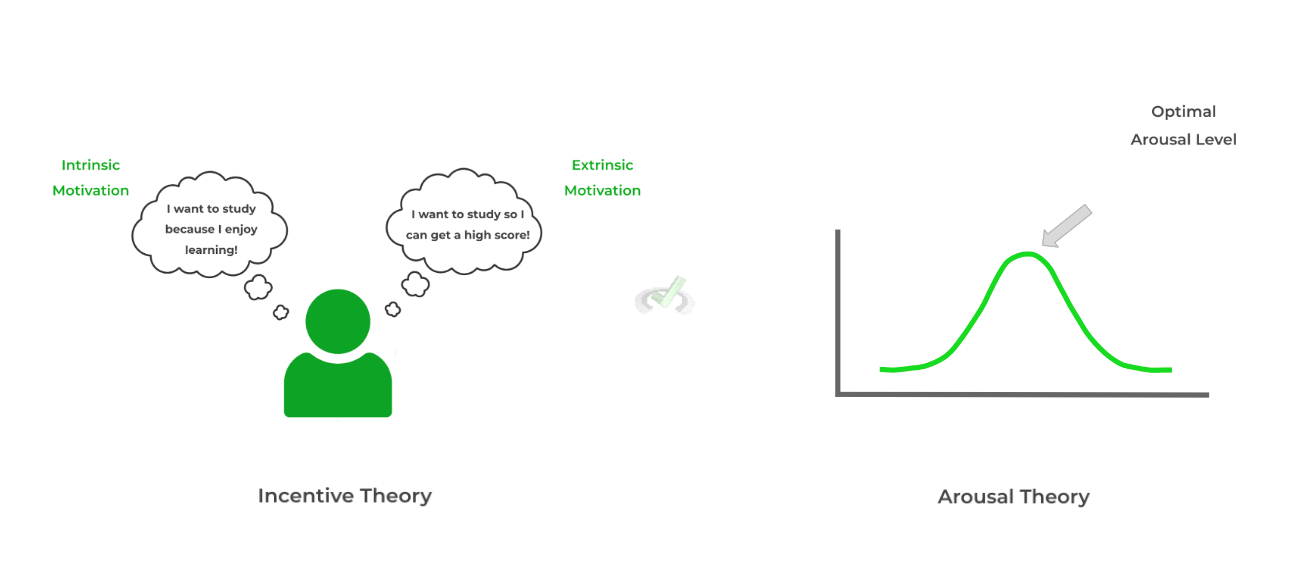
When studying drive-reduction theory, use the name to your advantage! This theory states that motivation from our actions comes from the drive to eliminate or reduce an imbalance in our system, thus restoring that balance.
When you’re feeling too hot, this represents the “imbalance,” and we have a drive to restore balance like swimming at a pool or turning on a fan.
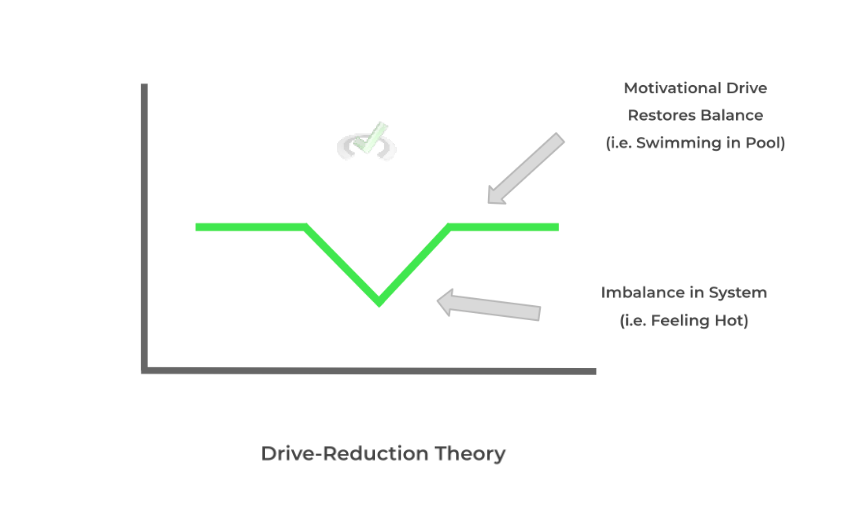
In a need base theory, motivation arises to satisfy our body’s physiological and psychological needs. This is best illustrated by Maslow’s Hierarchy of Needs which puts needs in a hierarchical pyramid where the bottom needs have higher priority over the needs on the top.
From bottom to top, the needs are classified into: physiological, security/safety, social, esteem, and self-actualization. Try and make your own mnemonics, but for those basketball fans, we like to use this one: Steph (Curry), Expects, Slick, Shots, Permanently.
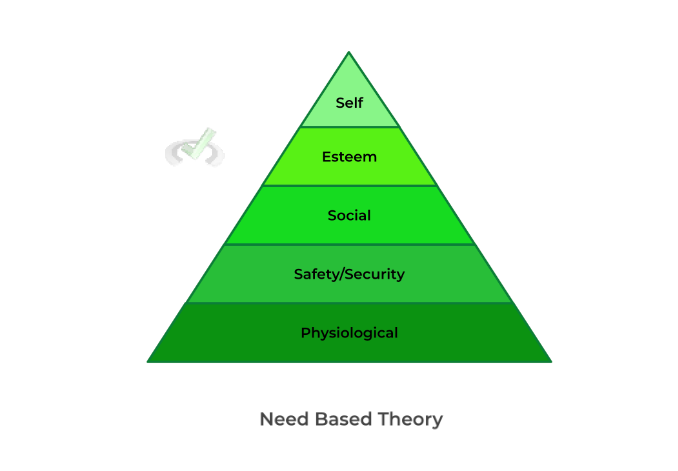
Full Study Notes : Features and Theories Behind Motivation on the MCAT
For more in-depth content review on the component and theories behind motivation, check out these detailed lesson notes created by top MCAT scorers.
2. Components and Roles of Emotion
While it’s generally difficult to come up with an exact definition for emotion, there are 3 main, universal facets: a physiological, behavioral, and cognitive component.
As kinda hinted by the term, the physiological component refers to stimulation or change in your body’s system.
Likewise, the behavioral component refers to any expressive action like a facial expression or a change in body language. Interpretation of the situational context that gives rise to our emotions refers to the cognitive component.
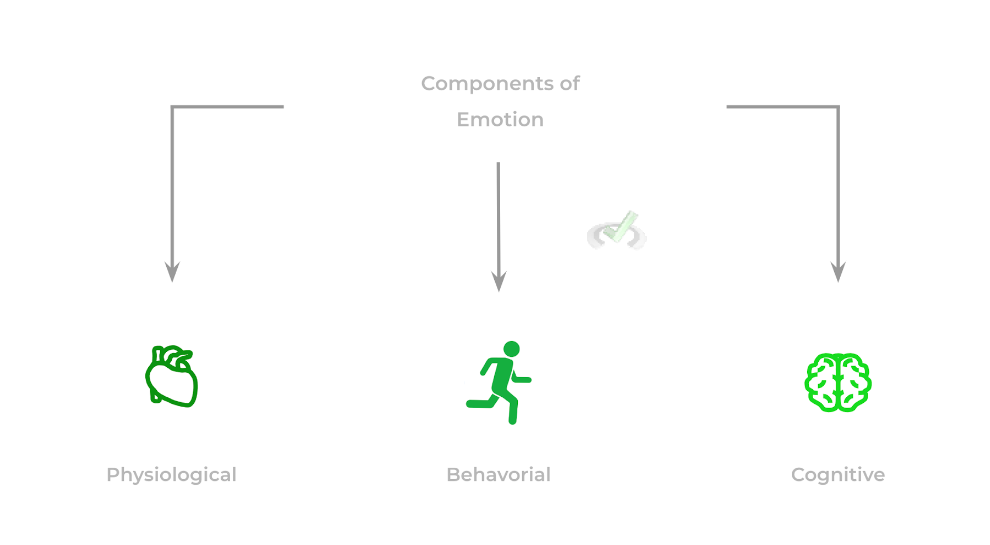
Let’s give an example to put the components into a better context. Suppose you’re going through a haunted house. You’re likely experiencing an intense emotion of fear and notice that your heart is racing and that you have goosebumps (physiological).
You also notice that your jaw has dropped and you’re making your way through the house with little tiny steps (behavioral).
You’re thinking about the uncertainty of what’s to pop up and scare you (cognitive), intensifying your feared state!
In addition, many researchers believe that there has been an evolutionary component to why we experience emotions. Evolutionary biologists propose that the emergence of emotions allowed early humans to navigate survival and social cues crucial when responding to situations.
Full Study Notes : Components and Roles of Emotion on the MCAT
For more in-depth content review on the components of emotions and their role, check out these detailed lesson notes created by top MCAT scorers.
3. Major Theories of Emotion
Similar to motivation, there are many theories that attempt to explain how we perceive emotion. They primarily differ in the preceding events, as well as their order, that lead up to the experience of emotion.
The simplest theory is the James-Lange theory which posits that we solely attribute our experience of emotion to a preceding physiological response. A great way to phrase this is as “My body is reacting this way (for example, increased heart rate); therefore, I’m experiencing this emotion” (for example, fear).
A step up from this theory is the Cannon-Bard theory where the experience of emotion and the physiological response occur simultaneously!
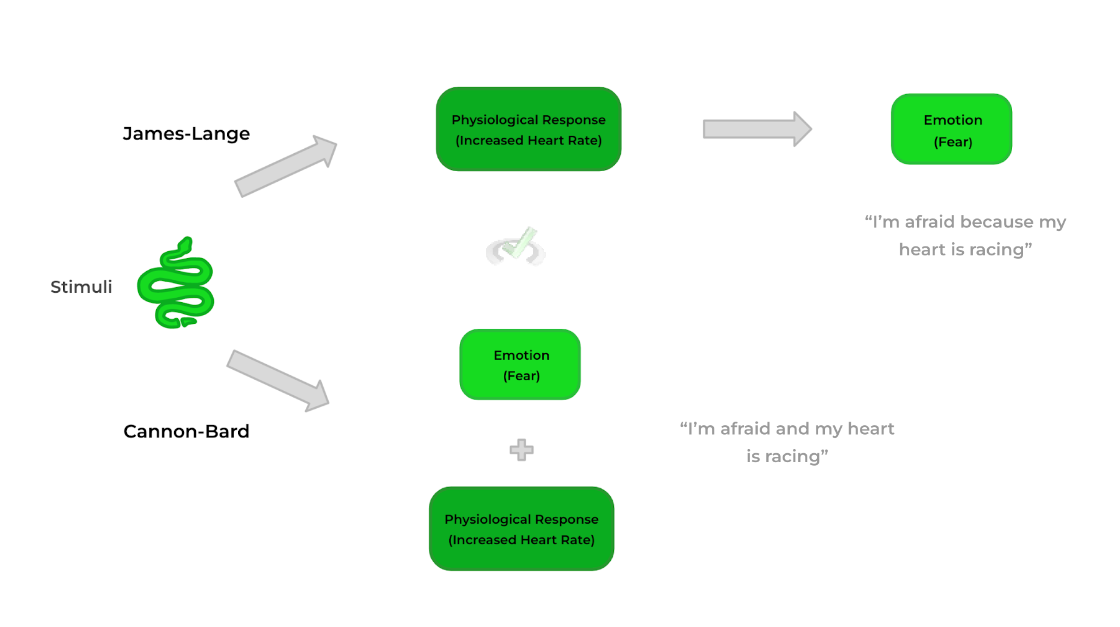
A more complex theory is the Schacter-Singer theory! It’s similar to the James-Lange theory, where there’s first a physiological response; however, before the experience of emotion, there’s a cognitive interpretation of the physiological response in the context of the situation.
Finally, the Lazarus theory of emotion states that a cognitive appraisal of the situation comes first and foremost! It’s only after this interpretation that we have a simultaneous physiological response and experience of emotion.
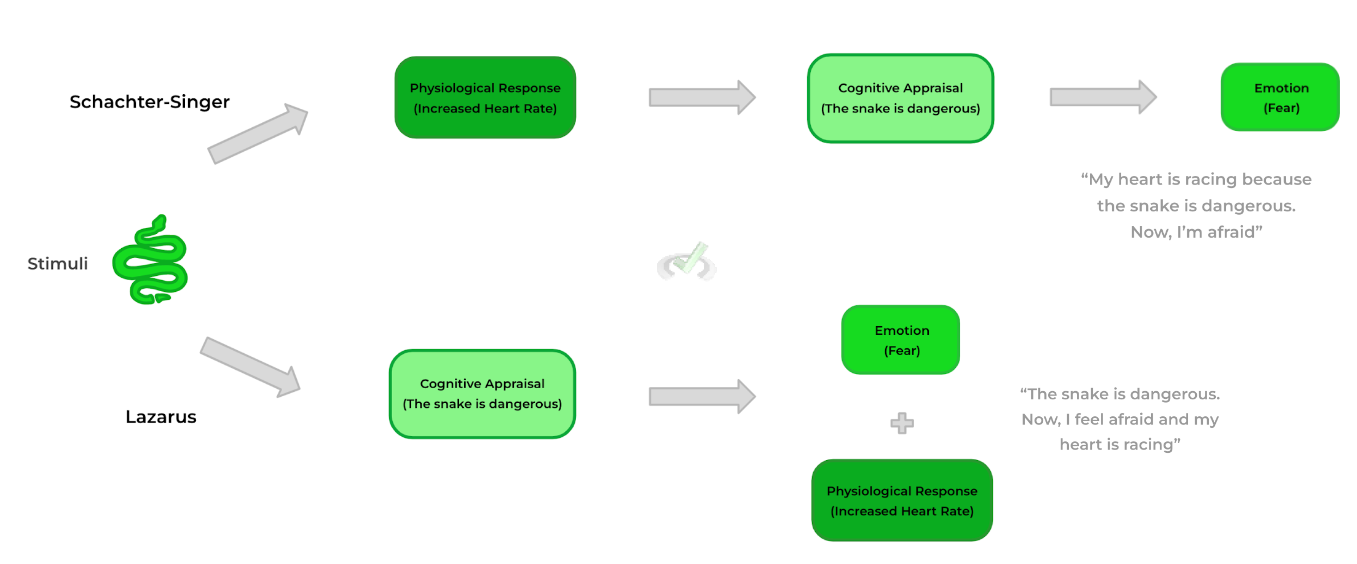
Full Study Notes : Major Theories of Emotion on the MCAT
For more in-depth content review on the different theories of emotion, check out these detailed lesson notes created by top MCAT scorers.
4. The Biology of Emotion
There can be an entire college course talking about the biological pathways and processes involved with emotion. However, for the MCAT, we can luckily get by with some basic principles and generalities!
Over the years of pioneering neuroscience research, we’ve come to identify many parts of the brain associated with our emotional experience!
The limbic system is a set of brain structures lying underneath the cerebrum that are involved with identifying and processing emotions as well as storing them as emotional memories. Though there are many components of this system, we’ll primarily cover 2: the amygdala and hippocampus.
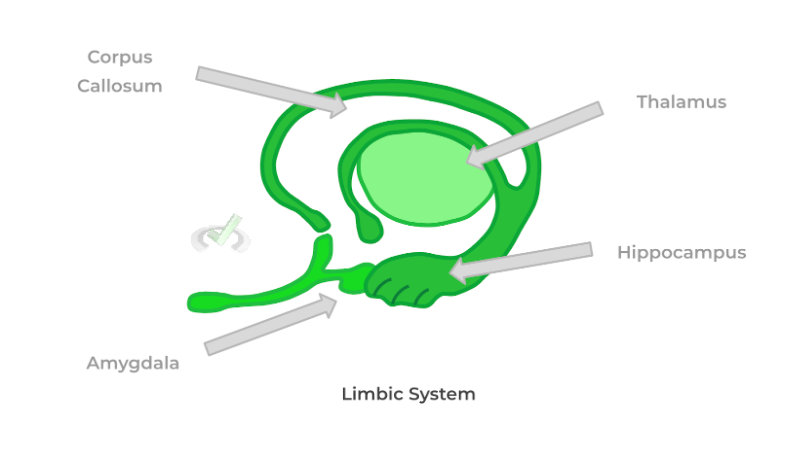
The amygdala is primarily responsible for emotional recognition and interpretation. More specifically, it’s heavily involved in our projection of fear and aggression!
The amygdala also has neuronal input to the prefrontal cortex to help regulate our emotions as well as how we respond to the emotions of others! This makes sense, as the prefrontal cortex is associated with executive function and strategic planning!
In addition, the amygdala interacts heavily with the hippocampus in order to form an emotional memory of an experience while also internalizing that emotional memory.
Full Study Notes : The Biology of Emotion on the MCAT
For more in-depth content review on the biology of emotions, check out these detailed lesson notes created by top MCAT scorers.
5. Features of Stress
This is for sure something we can all relate to! Whether prepping for the MCAT or applying to medical school, stress is a normal part of our human psyche. However, perhaps learning more about the science behind it can give us a better understanding of what stress is and how to manage it.
In a general sense, stress refers to when you experience any physiological, emotional, and/or psychological tension or strain. On a more scientific and biological level, stress occurs when your body deviates from a homeostatic equilibrium.
When we encounter a stressful situation, we have a specific cognitive appraisal system that determines how we respond to the situation. Our primary (1˚) appraisal determines whether the situation poses a threat in the first place. If a threat is present, our secondary (2˚) appraisal assesses whether we have the means or capacity to overcome that threat!
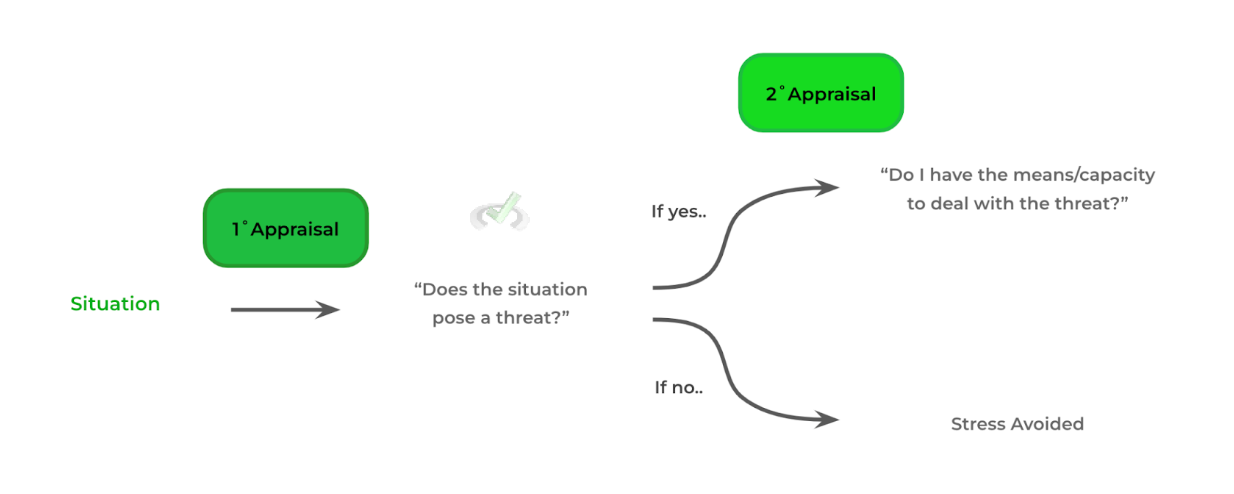
Let’s give an example! When faced with taking the MCAT, our 1˚appraisal sees taking the MCAT as a threat because of its difficulty and importance for medical school acceptance.
Our 2˚appraisal looks at how well we’ve prepared and studied for the MCAT. By preparing well and sufficiently, you should have the means to overcome this threat (something we’ll help you all accomplish!).
Full Study Notes : Features of Stress on the MCAT
For more in-depth content review on the components of stress and different stressors in our daily lives, check out these detailed lesson notes created by top MCAT scorers.
6. Physiological Outcomes of Stress
When we encounter stress, there are actually some physiological pathways that are activated in order for us to cope with the present stressors. The 2 primary pathways that are involved in our body’s stress response: 1) hypothalamic-sympathetic-adrenal (HSA) and 2) hypothalamic-pituitary-adrenal (HPA) pathways.
The HSA pathway is better known as your acute stress response as it preps your body to cope with short-term stressors. This pathway simply relies on the stimulation of the sympathetic nervous system.
After the processing of a stressor by the brain, the hypothalamus stimulates sympathetic nerve fibers, which further stimulate the adrenal glands to release epinephrine.
Conversely, the HPA pathway is better known as your chronic stress response as your body prepares to deal with long term stressors. Instead of stimulating sympathetic nerve fibers, the hypothalamus stimulates the pituitary gland to release ACTH. This tropic hormone then further stimulates the adrenal gland to release cortisol.

While these pathways at first give your body the heightened sensitivity to cope with stress, eventually, these mechanisms wear down over time to the point where it exhausts your body, leading to deterioration. The progression of body decline due to stress is the basis behind the theory of General Adaptation Syndrome.
Full Study Notes : Physiological Outcomes of Stress
For more in-depth content review on physiological outcomes of stress, check out these detailed lesson notes created by top MCAT scorers.
Important Definitions and Key Terms
Below are some high yield definitions and key terms to refer to when reviewing concepts and ideas about emotion and motivation!
Term | Definition |
|---|---|
Incentive Theory | Motivation theory that describes motivation coming from extrinsic and intrinsic factors |
Arousal Theory | Motivation theory that describes motivation coming from the need to maintain an optimal state of arousal |
Drive-Reduction Theory | Motivation theory that describes motivation coming from the drive to reduce an imbalance within one’s system |
Need Based Theory | Motivation theory that describes motivation coming from the desire to fulfill certain needs, arranged in a priority hierarchy |
James-Lange Theory | Theory of emotion where the experience of emotion results from a preceding physiological response |
Cannon-Bard Theory | Theory of emotion where the experience of emotion and physiological response occur simultaneously |
Schachter-Singer Theory | Theory of emotion where cognitive appraisal is attributed to a physiological response before experiencing emotion |
Lazarus Theory | Theory of emotion where cognitive appraisal of a situation occurs first, followed the a physiological response and experience of emotion |
Amygdala | Structure within limbic system responsible for the processing of emotion as well as the projection of fear and aggression |
Hippocampus | Structure within limbic system highly involved in memory consolidation |
Hypothalamic-Sympathetic-Adrenal Pathway | Acute stress response pathway which results in the release of epinephrine |
Hypothalamic-Pituitary-Adrenal Pathway | Chronic stress response pathway which result in the release of cortisol |
Additional FAQs - Motivation and Emotion on the MCAT
A. What are the Theories of Motivation and Emotion – MCAT?
For emotion, these include the James-Lange, Cannon-Bard, Schachter-Singer, and Lazarus theories of emotions!
B. What are the 4 Theories of Emotion – MCAT?
C. Is Emotion a Primary Motivation – MCAT?
In this sense, emotion is probably best considered a secondary drive as it's a motivating factor that doesn’t deal with basic human survival.
D. Is Contempt a Universal Emotion – MCAT?
Additional Reading Links – Study Notes for Motivation and Emotion on the MCAT
Additional Reading:
- Identity and Personality on the MCAT
- Language Development on the MCAT
- Learning and Memory on the MCAT
- Cognition and Consciousness on the MCAT
- Neurobiology on the MCAT
- Psychological Disorders on the MCAT
- Sensation and Perception on the MCAT
- Social Interaction on the MCAT
- Social Processes and Behavior on the MCAT
- Social Structure and Stratification on the MCAT
- Social Thinking and Attitudes on the MCAT



 To help you achieve your goal MCAT score, we take turns hosting these
To help you achieve your goal MCAT score, we take turns hosting these 
























